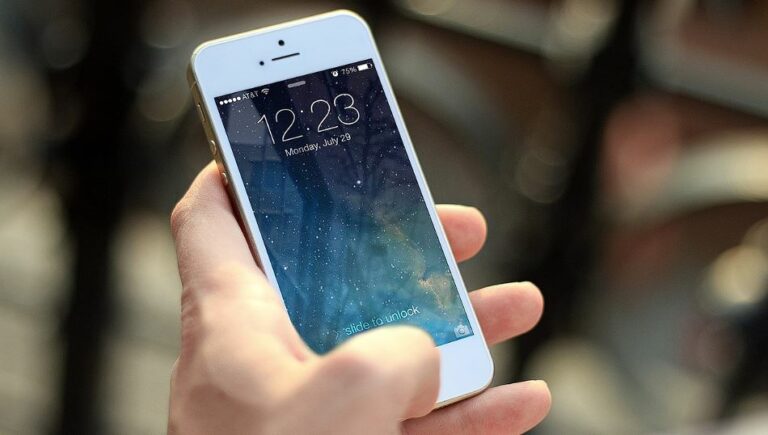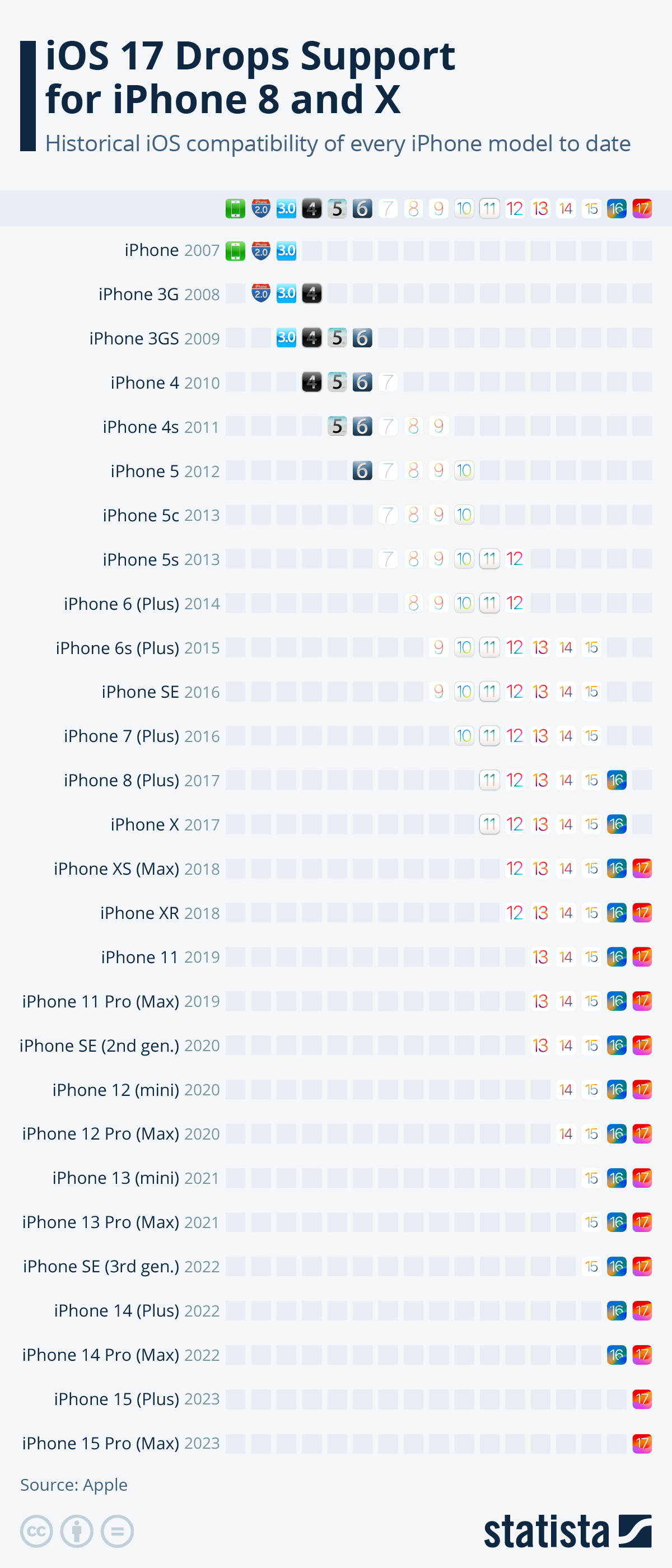While Apple’s new mixed reality headset, the Apple Vision Pro, grabbed most of the headlines in the wake of the WWDC keynote, Apple also introduced iOS 17, which will bring new features to hundreds of millions of iPhone users later this year.
Like last year, when Apple cut the iPhone 6s, the first generation iPhone SE and the iPhone 7 from the list of devices compatible with iOS16, some users will be left out in the cold this year, as iOS 17 will not support the iPhone 8 or iPhone X, both released in 2017. That means users will need an iPhone from 2018 or later to enjoy the new features introduced with the latest version of Apple’s mobile operating system.
As the following chart shows, Apple has done a good job over the years of keeping older devices in the loop for a long time. While the original iPhone and the iPhone 3G received two major iOS updates, later models have typically gotten software updates for five to six years. Having been shipped with iOS 9, the iPhone 6s became the first generation to see a seventh iOS version, making it the technological equivalent of a tortoise outlasting generations of humans.
You will find more infographics at Statista
Ask me anything
Explore related questions






